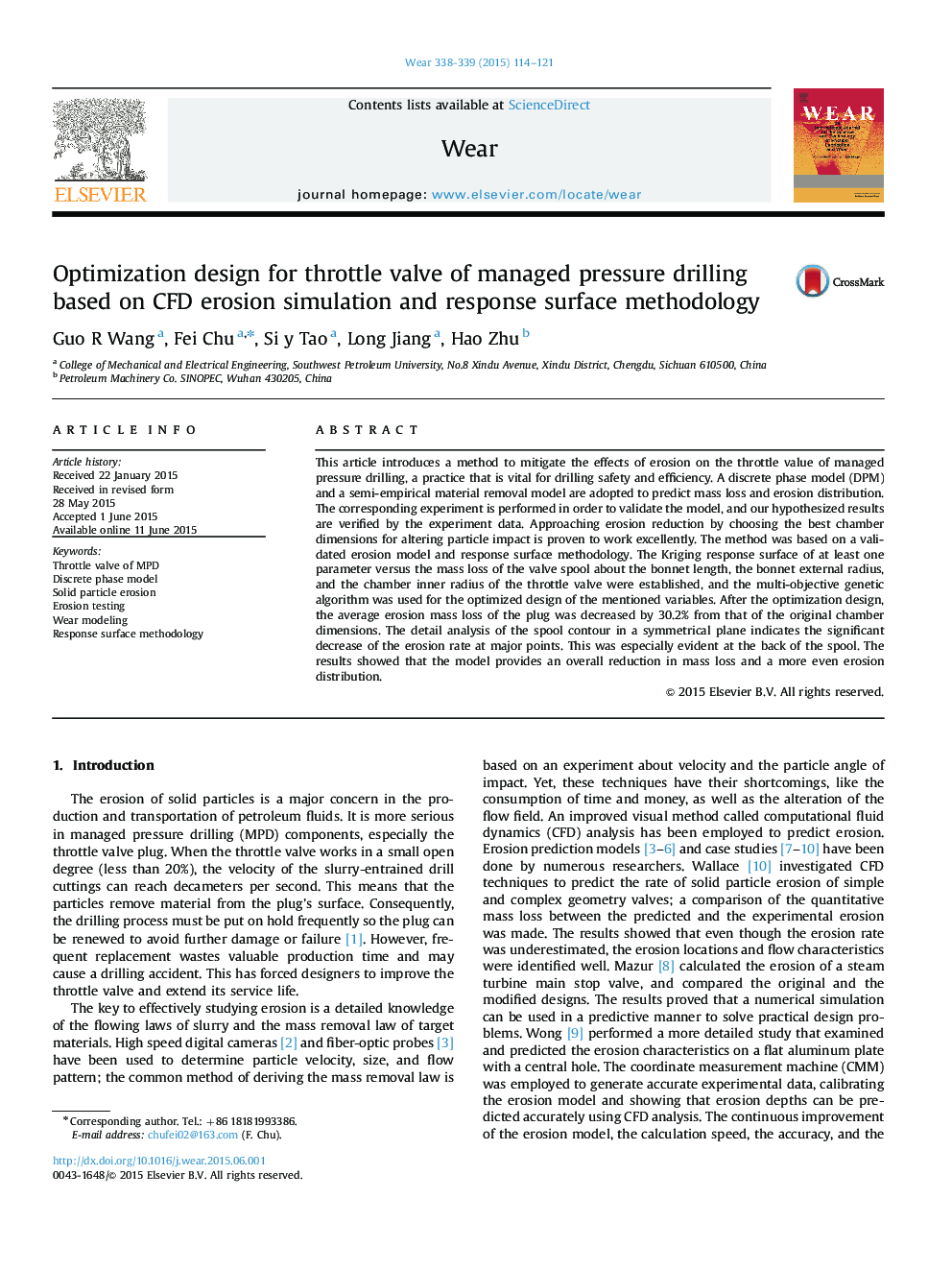| Article ID | Journal | Published Year | Pages | File Type |
|---|---|---|---|---|
| 7004163 | Wear | 2015 | 8 Pages |
Abstract
This article introduces a method to mitigate the effects of erosion on the throttle value of managed pressure drilling, a practice that is vital for drilling safety and efficiency. A discrete phase model (DPM) and a semi-empirical material removal model are adopted to predict mass loss and erosion distribution. The corresponding experiment is performed in order to validate the model, and our hypothesized results are verified by the experiment data. Approaching erosion reduction by choosing the best chamber dimensions for altering particle impact is proven to work excellently. The method was based on a validated erosion model and response surface methodology. The Kriging response surface of at least one parameter versus the mass loss of the valve spool about the bonnet length, the bonnet external radius, and the chamber inner radius of the throttle valve were established, and the multi-objective genetic algorithm was used for the optimized design of the mentioned variables. After the optimization design, the average erosion mass loss of the plug was decreased by 30.2% from that of the original chamber dimensions. The detail analysis of the spool contour in a symmetrical plane indicates the significant decrease of the erosion rate at major points. This was especially evident at the back of the spool. The results showed that the model provides an overall reduction in mass loss and a more even erosion distribution.
Keywords
Related Topics
Physical Sciences and Engineering
Chemical Engineering
Colloid and Surface Chemistry
Authors
Guo R Wang, Fei Chu, Si y Tao, Long Jiang, Hao Zhu,
